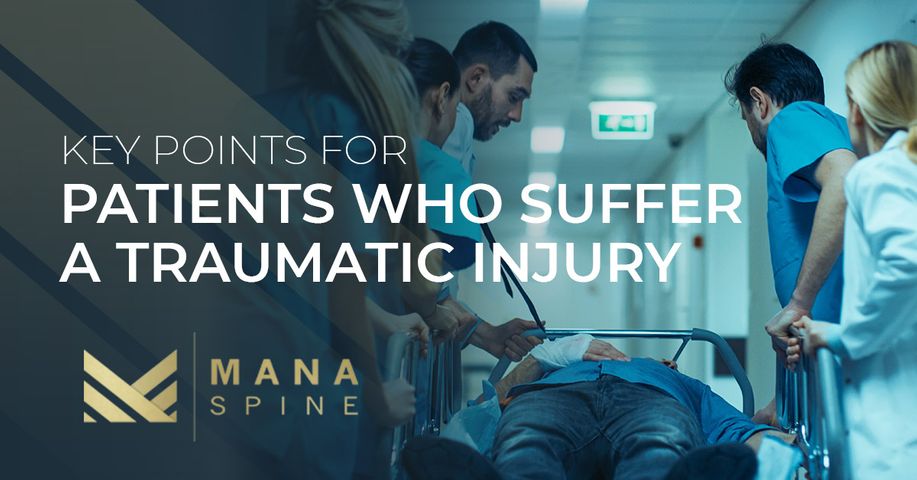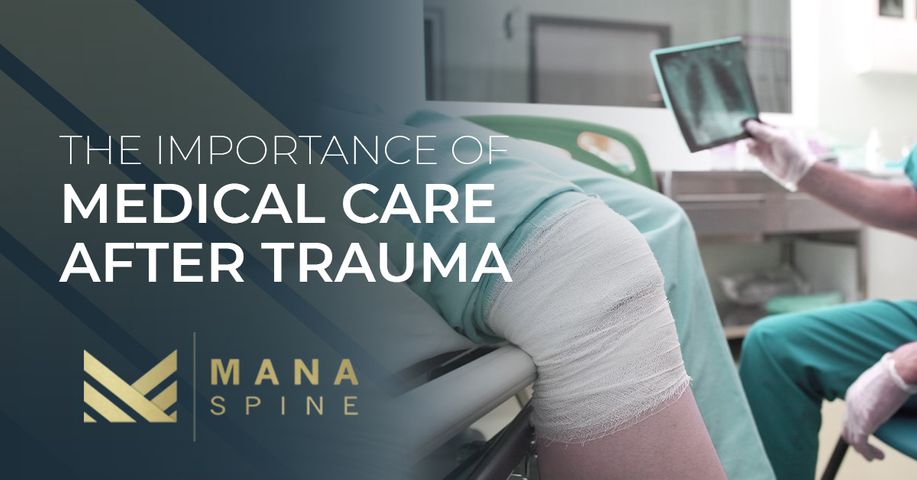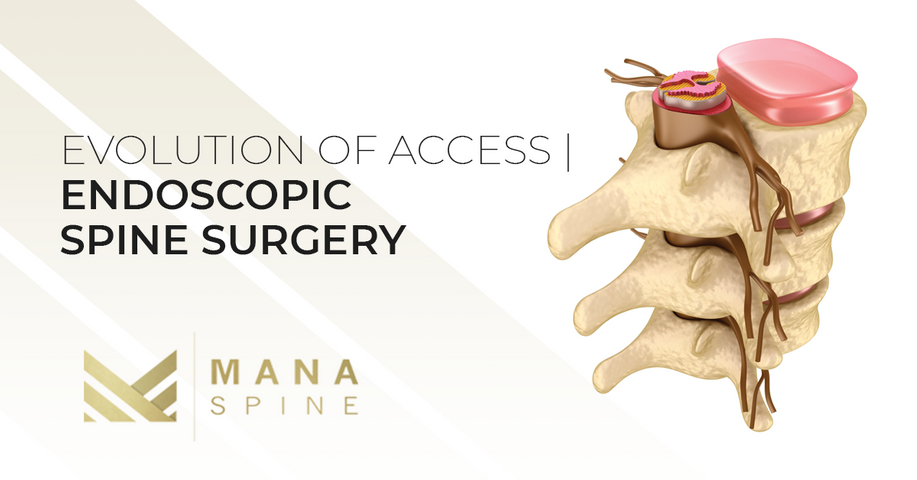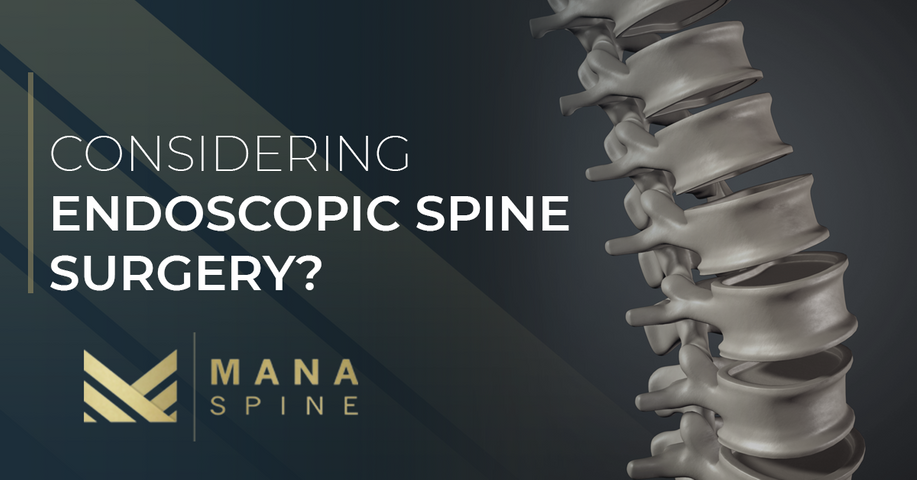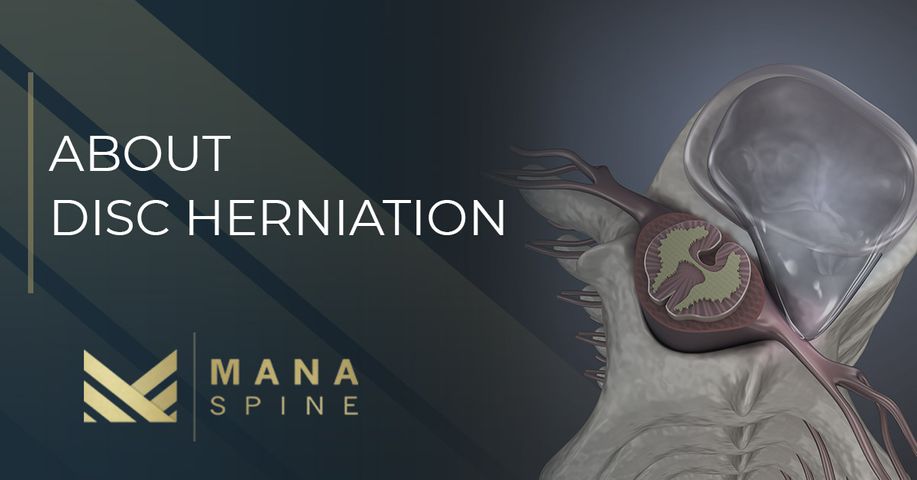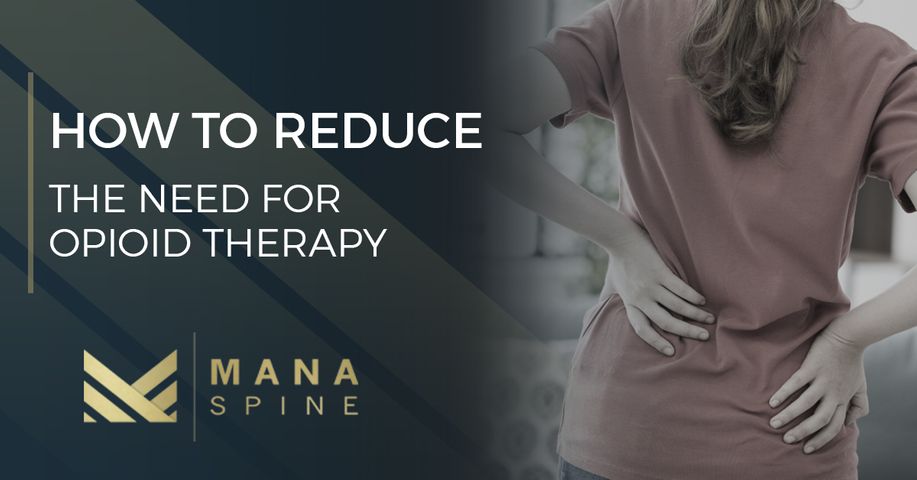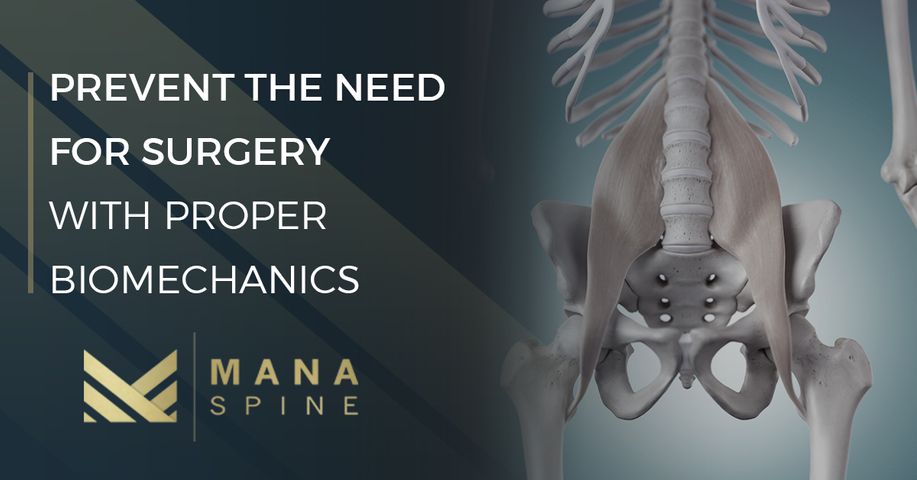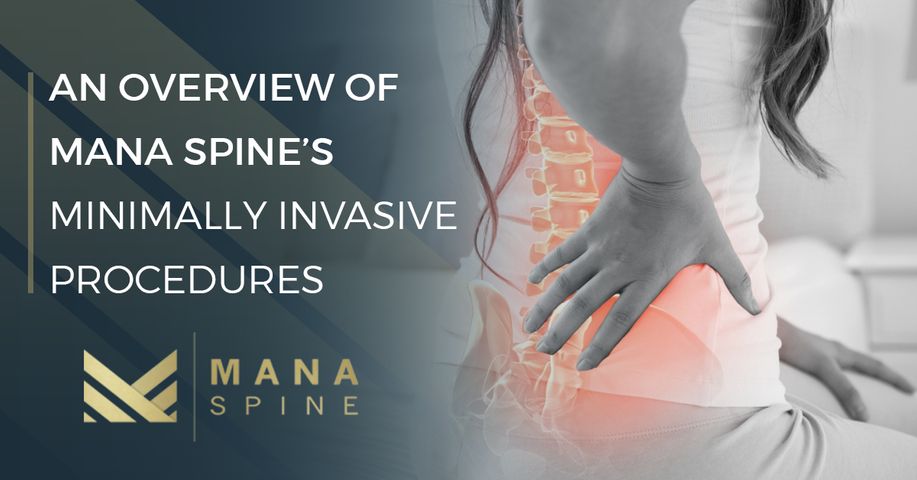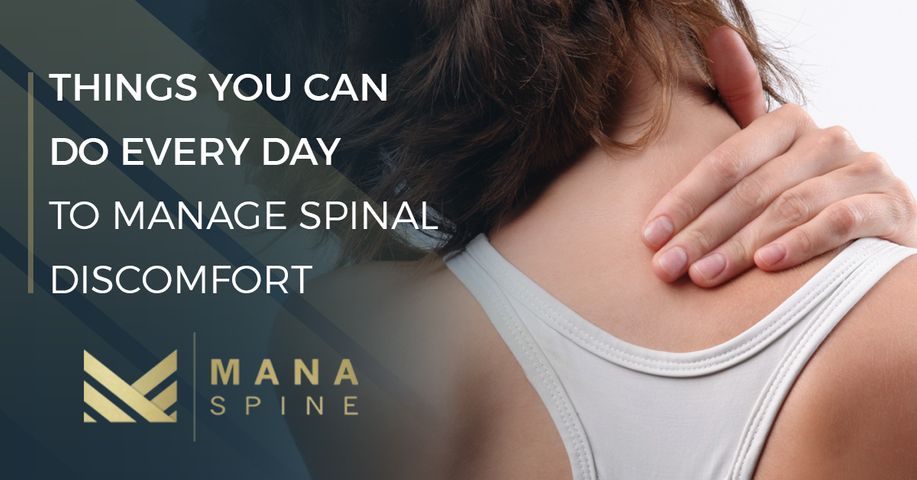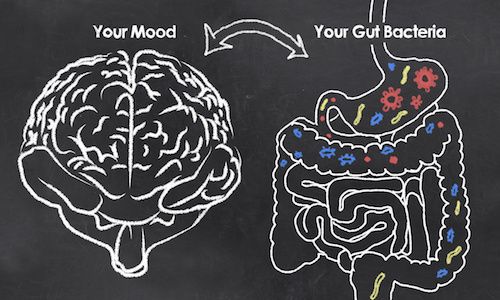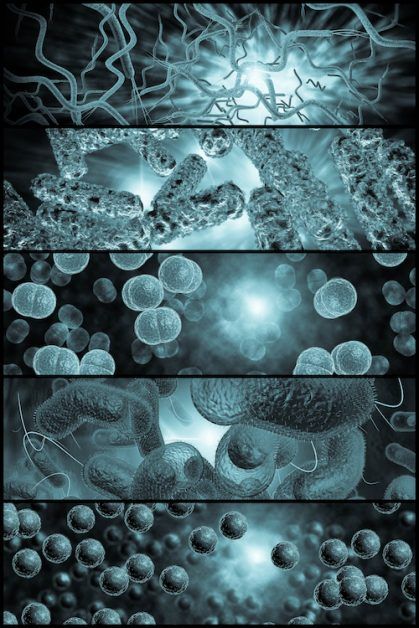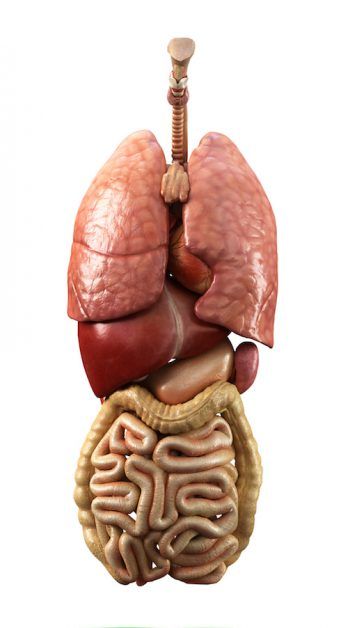Patient Education
A BRAND BUILT ON THE PATIENT DOCTOR RELATIONSHIP
Key Points For Patients Who Suffer A Traumatic Injury
Seek Professional Care
Regardless of the impact, speed, or nature of a motor vehicle collision or level of fall or unique condition of a traumatic event, every patient needs to get a medical examination by a board-certified medical professional immediately.
Keep Imaging For Your Own Records
If you have imaging performed, obtain the images in the form of a hard copy or on a disc. These images can be reviewed with you in detail and further your education about what you may be feeling.
Know What Your Physician Does
Not all examinations are equal in value as each physician has a different objective they are trying to reach. An ER physician may consider what is life-threatening or what warrants an emergency surgery. A surgeon may evaluate how to treat something with conventional surgery, and a physiatrist will consider your injuries and how they will affect your future.
Different Injuries Have Different Timetables For Development
A nerve injury, compensatory injury, or post-concussive brain injury evolves over time. Unfortunately, these symptoms can be missed if a doctor is not there to evaluate you repeatedly over a period of time.
moreThe Importance Of Medical Care After Trauma
If ‘suffering’ is to be aware of your limitations while living, then why not have physical limitations caused by pain evaluated immediately by a board-certified professional? This is especially important after a traumatic injury such as an auto accident even after an emergency room (ER) visit. Why are you suffering without seeking a medical evaluation?
Traumatic injuries are often evaluated first in an ER. The fast-paced world of an ER serves to effectively triage surgical emergencies. Evaluation in an urgent care facility or emergency room is not a substitute for the value of outpatient visits with a healthcare professional who can assess your symptoms without the time restraints of the ER. Your symptoms need to be evaluated in the context of what is required of you from day to day and, most importantly, what your functional aspirations are.
Putting together the puzzle of human physiology and how pain affects the body requires time, thought, and expertise. The right conversation from a treating physician can give you patience when your pain makes you feel like you are losing ground.
We always urge you to seek health care from a board-certified physician. A trained professional can listen to your symptoms and provide a comprehensive perspective on what you are feeling since not everything is identified in a diagnostic study.
moreEndoscopic Spine Surgery
A Place For Endoscopic Spine Surgery At The Forefront Of Minimally Invasive Spine CareThe concept of minimally invasive spine care is to:
- Utilize a surgical strategy that reduces surgical invasiveness
- Improve access and visualization while achieving the surgical goal
- Reduce peri-operative morbidity and postoperative consequences such as adjacent segment disease
For over a decade endoscopic spine surgery has been performed as part of daily practice in spine centers in the United States and internationally and has provided countless patients with an option for non-fusion spine surgery. Continuing research shows surgical outcomes are comparable when compared to open spine surgeries, giving today’s patient more health care options than ever before.
As endoscopic spine surgery continues to evolve as a state of the art technique for the treatment of disc herniations, lateral and central canal spinal stenosis, here are a few questions for patients to consider when thinking of endoscopic spine surgery:
- Have conservative measures have been exhausted (ie. physical therapy)?
- Have interventional pain management procedures been performed?
- Have I been properly educated on my options and prognosis?
- Have I spoken with a spine surgeon to consider all my options?
- Do I understand the difference between causes of my back pain (degenerative changes, segmental instability or deformity) and cause of my leg pain (stenosis)?
Considering Endoscopic Spine Surgery?
Are you considering endoscopic spinal surgery in Orlando? Here are some brief explanations to commonly asked questions about endoscopic spine care.
How is Endoscopic Spine Surgery performed?
After meticulous pre-operative planning, endoscopic spine surgery may be performed with the patient under local or IV sedation. Surgical treatment is performed through the scope (endoscope), which is a 7 to 8mm tube depending on the technique and condition causing neural compression.
With the patient on the surgical table, under the assistance of fluoroscopy (x-ray guidance), a point of entry is determined and a guide is placed. A small skin incision is then made at the point of guide insertion. Endoscopic spine care is a minimally invasive spinal surgery option to treat certain conditions.
Under fluoroscopic guidance a dilator is then inserted over the guide, followed by a working sleeve (think of a straw). The dilator is removed and the endoscope (camera) is introduced. Utilizing specific instruments that work within the sleeve, endoscopic surgical intervention is then performed under continuous visualization and irrigation.
moreAbout Disc Herniation
Ashley Goordeen MD
Below is a brief discussion regarding the anatomy, function intervertebral disc and what a disc herniation is:
Components of the Intervertebral Disc
The intervertebral disc has three main components:
1) The intervertebral disc is composed of an endplate which is a layer of cartilage that covers the central parts of the superior and inferior vertebral bodies. Endplates are responsible for perfusion between vertebral capillaries and disc cells, and uniform transfer of load to the disc.
2) The nucleus pulposus represents a matrix of cells and water that distribute load within the disc during movement and static positions.
3) The annulus fibrosus represents densely packed collagen located around the nucleus pulposus. The purposed of the annulus is to distribute pressures placed on the disc while protecting the nucleus.
Function of the Intervertebral Disc
Intervertebral discs are responsible for stability during load bearing positions, balancing stresses exerted on the spine during movement and providing a stable matrix for numerous cellular processes.
Intervertebral Disc Herniation
Disc herniation is a term describing localized displacement of disc material beyond the limits of intervertebral disc space. (Disc material may be nuclear tissue, cartilage, annular tissue or apophyseal bone fragment or any combination thereof). Categories of disc herniations include: broad-based, focal, extrusion, and protrusion. These categories are defined by amount and shape of displaced disc material displaced in comparison to the circumference of the disc. Terms such as paracentral, lateral and far lateral are further descriptions of disc herniations that clinicians may use to describe the location of the disc herniation.
moreHow To Reduce The Need For Opioid Therapy
Here are a few helpful ideas on how to limit or reduce your need for opioid therapy when suffering from pain.
- Have an exit plan before starting opioid therapy. A timeline for peri-operative opioid use before you start is key to a healthy outcome. If you have never been on opioid therapy and have a surgery scheduled, a postoperative timeframe of 6 weeks or less is ideal. If you have been on chronic opioid therapy prior to surgery, tapering to your pre-operative dose within 6 weeks is recommended.
- Keep a pain diary to have an account of what you are treating. Life gets complicated, and all to often pharmaceuticals provide seemingly quick solutions. Our receptors don’t see it that way and the picture gets muddy.
- Be mindful that depressed patients tend to overuse opioids because they use them to treat insomnia and stress. Depression also appears to increase the risk of abuse or nonmedical use of prescription opioids among adults and adolescents. This increased rate of non-medical opioid use may be the path through which depression increases the risk of Opioid Use Disorder among patients with chronic pain. (Sullivan 2018)
- Seek early intervention for pain relief, whether it be physical therapy or image-guided procedural therapy, and remember that movement is medicine. Often when a body part encounters discomfort it adapts by relying on supporting structures. The central nervous system may even increase your perception of pain beyond the initial injury due to a phenomenon termed ‘centralization’ which describes the negative effect that repeated stimuli has on your central nervous system. Stopping this negative cycle with multidisciplinary efforts early and often is key.
- Treatment plans should have a goal to not exceed 90 morphine equivalents daily (MED). Your prescribing physician should be able to recite these equations and develop a plan that achieves this goal.
- Opioid Use Disorder: A person taking a relatively low dose of prescribed opioids is 15 times as likely to develop opioid use disorder as a person who has not been prescribed opioids. The risk continues to rise with escalating doses; at high doses (≥ 120 mg MED) of opioids, the person’s risk of developing OUD is 122 times that of a person who has not been prescribed opioids. (Edlund 2014)
- Maintain a positive mindset and perspective on your situation and limitations. Consider meditation and achieve a mindful distance between you and your pain. Your pain should not define you.
Prevent The Need For Surgery With Proper Biomechanics And Learn About The Psoas Muscle
Brought to you by your friends at www.manaspine.com
Whether in school, at work or on Netflix we are all exposed to the inconvenience of having to sit for long periods of time. What we are not aware of is how it affects the psoas muscle. This muscle should not be ignored just because you can’t pronounce it. It is a powerful mediator between the dynamic stability of the lumbar spine and fluid hip function and is often shortened during periods of sitting. The psoas muscle doesn’t act alone, rather it acts in concert with paraspinal muscles (iliocostalis, longissimus, and multifidus) to hold your lumbar spine in alignment.
A strong psoas muscle has been shown to be protective against disability coming from low back pain and may improve surgical outcomes after posterior decompressive spine surgery. Sitting down shortens the psoas muscle, causing it to contract which leads to weakening (via deactivation) of the muscles in the spine. Therefore we want to stretch the psoas muscle out while working out the lumbar paraspinal (low back) muscles.
Please review these points and consider them before sitting down or going to the gym:
- Low back pain can lead to hip immobility and knee pain, and vice versa
- Your back muscles and psoas muscle are as much of your core as your abdominal muscles are
- If you want to prevent the need for back surgery someday then practice these moves sooner than later
- Sometimes a good stretch can be better for you than a tough work out, range of motion matters as you get older
- Consider looking up these stretches and moves to get started
- Couch stretch
- Scorpion Stretch
- Superman pose
- Hanging leg lifts
- Frankensteins
- Psoas march
An Overview Of Mana Spine’s Minimally Invasive Procedures
Mana Spine is committed to bringing more minimally invasive options for patients suffering from back pain to Central Florida. In today’s post, we are going to go over just a few of the treatment options we offer. Our goal is to provide patients with more non-pharmacologic choices to stay healthy and preserve mobility.
Spinal Stenosis, pain caused by accidents, injuries, or just normal wear and tear, can be debilitating. Whether your primary physician has suggested you see a spinal surgeon to assess your issues or you have sought out a spine center in Orlando or Mt. Dora to find a diagnosis for your pain, the comprehensive approach to spine care at Mana Spine can help. Keep reading to learn a little more about some of the procedures performed here or at an ambulatory surgical center, or schedule a consultation with a back doctor at Mana Spine today.
View All Of Our Spine Procedures
Stem Cell Therapy
There are many misconceptions about stem cell therapy for pain. So many, in fact, that we will need to dedicate an entire blog to the procedure just to scratch the surface. Stem cells can be obtained through a patient's own bone marrow, fat cells, or through purified amniotic tissue. These stem cells can then be injected into the area where a patient is experiencing pain or discomfort using special imaging tools that allow your spine specialist to ensure correct placement. Since stem cells naturally respond when they detect a tissue injury, the healing process will be sped up thanks to the influx of stem cells. Stem cell therapy for pain can help treat discomfort in the neck and back, assist in the healing of sports injuries, and works as a treatment for tennis elbow, among other conditions.
moreThings You Can Do Every Day To Manage Spinal Discomfort
Mana Spine’s goal is to help Central Floridians live a life free of back discomfort and painful symptoms through various minimally invasive spine surgeries. Conditions we treat range from degenerative disc disease to tendinitis to spinal stenosis to general hip, back, shoulder, knee, and joint pain. We offer interventional treatments and regenerative medicine to help treat these conditions in ways that are less invasive than traditional spine surgery and don’t involve the prolonged use of prescription pain medication that simply masks the pain, rather than treats it.
If you are experiencing back discomfort for a known or unknown reason, be sure to get in touch with our spine center today. We would love to schedule a consultation with you to assess your situation and create a plan of action to help you get back to living your life free of irritation and pain.
In the meantime, there are steps you can take right now that could help reduce and manage pain. Keep reading to learn more.
Schedule A Consultation With Mana Spine Today
moreWork Cited (articles 1-4)
Work Cited (articles 1-4)
1. Nagler-Anderson C. Man the barrier! Strategic defences in the intestinal mucosa. Nature reviews Immunology. 2001;1(1):59-67.
2. Zhang YJ, Li S, Gan RY, Zhou T, Xu DP, Li HB. Impacts of gut bacteria on human health and diseases. International journal of molecular sciences. 2015;16(4):7493-7519.
3. Reigstad CS, Salmonson CE, Rainey JF, 3rd, et al. Gut microbes promote colonic serotonin production through an effect of short-chain fatty acids on enterochromaffin cells. FASEB journal : official publication of the Federation of American Societies for Experimental Biology. 2015;29(4): 1395-1403.
4. Cirillo C, Vanden Berghe P, Tack J. Role of serotonin in gastrointestinal physiology and pathology.
Minerva endocrinologica. 2011;36(4):311-324.
5. Hollander D. Intestinal permeability, leaky gut, and intestinal disorders. Current gastroenterology reports. 1999;1(5):410-416.
6. Bischoff SC, Barbara G, Buurman W, et al. Intestinal permeability–a new target for disease prevention and therapy. BMC gastroenterology. 2014;14:189.
7. Ritchie ML, Romanuk TN. A meta-analysis of probiotic efficacy for gastrointestinal diseases. PloS one. 2012;7(4):e34938.
moreThe Healthy Science Behind Fat
Nikhil Bhandary MD, Jessica Fernandez MD
Omega-3 and Omega-6 Polyunsaturated Fatty Acids
Omega-3 polyunsaturated fatty acids (Omega-3) are important due to their anti- inflammatory benefits. Omega-3 fatty acids are divided into 2 main components, These are eicosapentaenoic acid (EPA), and docosahexaenoic acid (DHA).
Omega-6 polyunsaturated fatty acids (Omega-6) have pro-inflammatory effects. Omega-6 can potentially promote more fat storage since it suppresses GLUT4, which is an insulin receptor8. (Insulin sensitivity is good, suppression of insulin receptors are bad) Omega-3 increases the expression of GLUT4 which increases sensitivity to insulin and as a result less fat is stored in our body (8).
Unfortunately, we consume more omega-6 fatty acids in the Western diet than we do Omega-3. A decrease in Omega-6 and an increase in Omega-3 fatty acids can have a reduction in inflammatory diseases such as rheumatoid arthritis, IBD, cancer and cardiovascular diseases(16). This can be done by increasing the amount of fatty fish such as salmon, sardines, mackerel, albacore tuna, as well as by taking high quality fish oil supplements16. Other great Omega-3 foods are flaxseed, chia seeds, and spinach. On the other hand, eggs, poultry, and pork contain the greatest amount of Omega-6 fatty acids and a reduction in these types of food may be beneficial in your diet.
moreHow Your Gastrointestinal System Keeps You Healthy
Jessica Fernandez MD, Nikhil Bhandary MD
Nutrient absorption and excretion
The gut has an incredibly important role. It is composed of both the small and large intestines, and is where all of the nutrients from the food which we eat, and liquids we drink get absorbed. There are several processes our bodies go through to break down food, making it into smaller particles of carbohydrates, proteins, and fats that can be absorbed as well as excreted. Once these small particles are broken down and absorbed by the mucosa/lining of the intestine, they reach the blood where they are carried throughout the body and stored so they can be used for energy. Water is mostly reabsorbed in the colon, any undigested products and fibers that are not absorbed through the digestive tract are then excreted.
For example, vitamin B12 gets absorbed specifically in the part of the small intestine called the ilium. When there are intestinal disorders, it can cause a disruption in the absorption of vitamin B12 that could lead to a deficiency in this type of vitamin. It is also in the intestines where we have millions of bacteria called the gut microbiome that benefit us and help us lead healthy lives.
The Immune System of the Gut
moreA Day In The Life Of Our Gut: Things We Encounter On A Daily Basis That Affect our Processing System
Jessica Fernandez MD, Nikhil Bhandary MD
Probiotics
As society has progressed, there have been improvements in hygiene and nutrition which resulted in food, especially in the western diet, containing diminished amount of bacteria compared to less industrialized countries(7). As a result, our diets now contain increased amounts of processed foods, preservatives, and artificial sweeteners, ultimately decreasing the amount of bacteria important to fight off inflammatory disorders(7).
Probiotics are live cultures of harmless microorganisms or bacteria that have beneficial effects on the human gut*. Some of these beneficial effects include “providing protective barriers, enhancing immune responses, and clearing pathogens in the gastrointestinal tract”(7). They do this most likely by decreasing the amount of harmful bacteria that can grow, making the intestinal environment more acidic (reducing the pH), and stimulating the gut’s immune system(7). Probiotic supplements are commercially available to purchase as these microorganisms are usually derived from food sources. For example, one of the most common probiotics is called Lactobacillus, which is a type of bacteria that is usually present in our gut and helps break down sugars into lactic acid.
moreDairy, Cortisol, Carbs And Sugar An Unlikely Food Pyramid
Jessica Fernandez MD, Nikhil Bhandary MD
Dairy
The necessity of dairy to a diet is a controversial topic. While dairy is not an essential diet component it can be a good source of nutrition for many. For instance dairy can be an excellent source of calcium, vitamins D, E, A, B complex vitamins, folic acid, phosphorus, potassium and magnesium23. Cow’s milk contains casein, which is a protein that is easily absorbed and important for soreness prevention and muscle growth(23). Casein, however, can have “autoimmune-stimulating properties and can initiate very serious allergic reactions in some people particularly those who have experienced “leaky gut” syndrome as a result of a concurrent intolerance to grains”(8).
Some downsides to dairy include emulsifiers in processed cheese. These emulsifiers are used to increase the spreadability of cheese when it melts and can have adverse health risks(10). Lastly dairy is relatively low glycemic but stimulates insulin; for those looking to lose belly fat, dairy can prove to be a hindrance.
Cortisol and its link to the ingestion of high amounts of carbohydrates
Cortisol is a hormone in our bodies produced by the adrenal gland that is released into the bloodstream during times of stress. Cortisol is important in energy production as it can produce glucose from muscle tissue during these times8. Changes in your body such as increased heart rate, respiration and blood circulation can all occur during high cortisol release(8).
more

